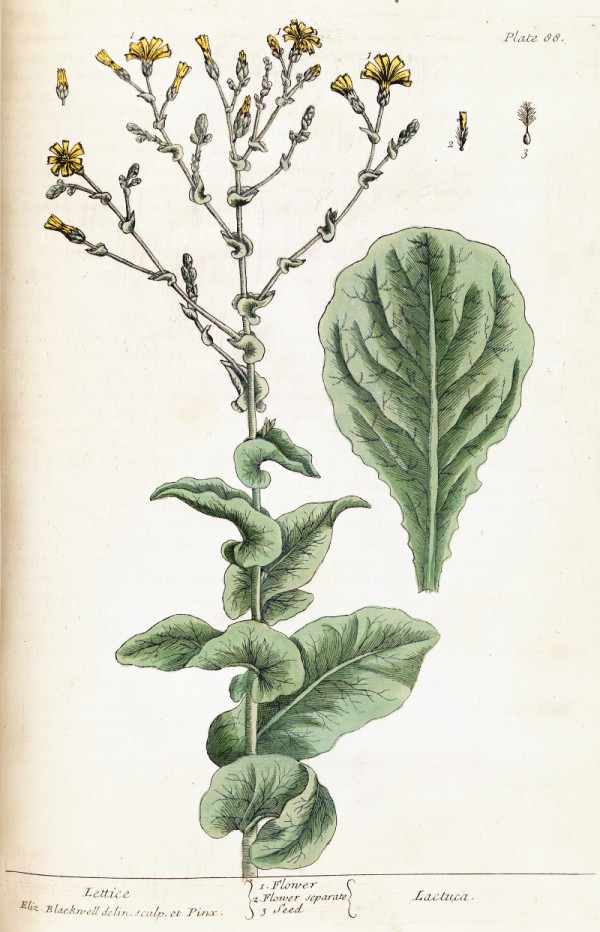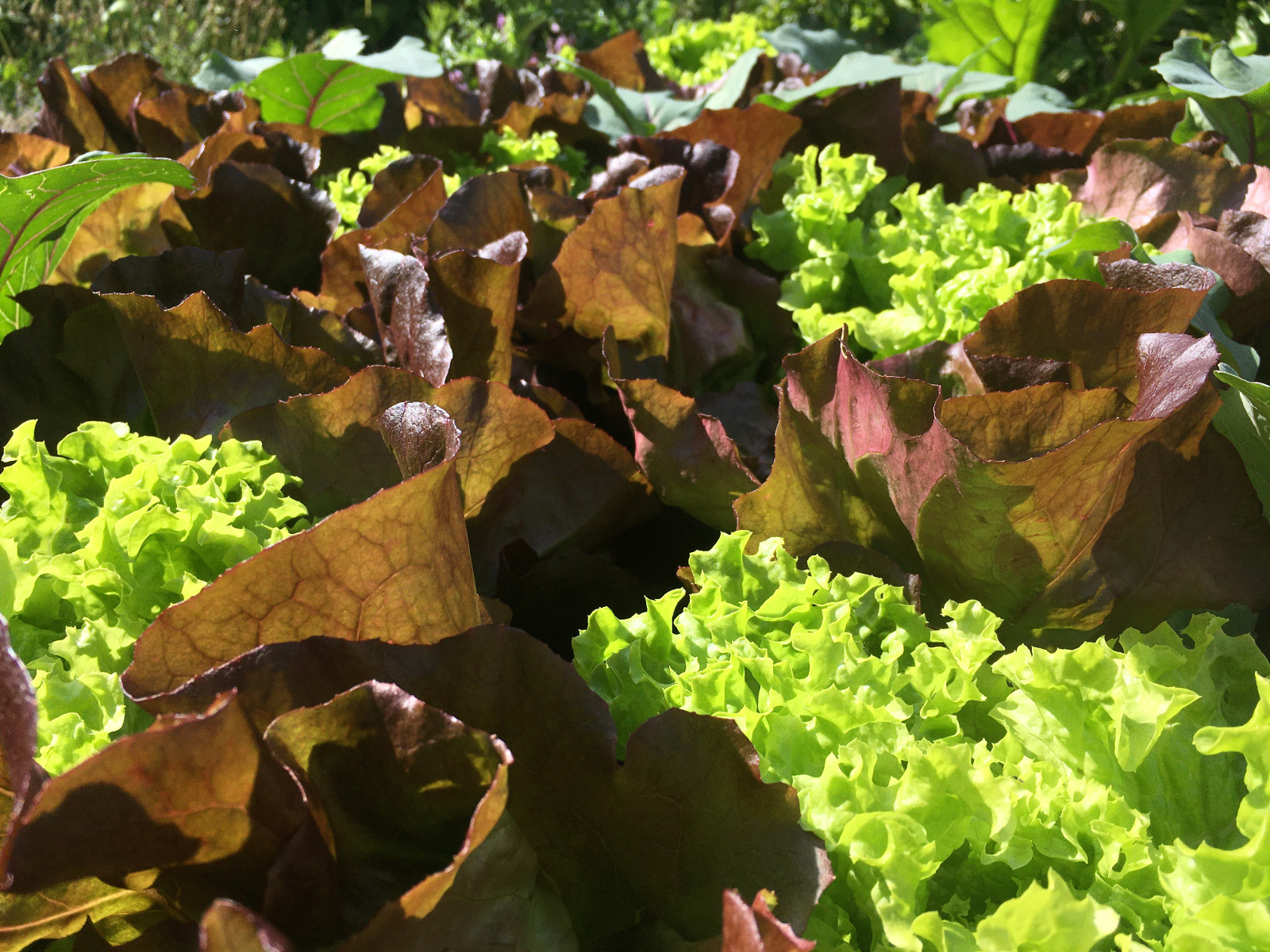Lactuca sativa L. - Asteraceae - lettuce, (Grüner) Salat, Garten-Lattich
Annual or biennial herb, up to 1m tall; leaves green, glabrous, soft to crispy; flowers yellow.
„Lactuca sativa was first known in cultivation in ancient Egypt. It is widely cultivated as a vegetable in China. Leaves of the species contain Vitamins A, B9, C, and K and can be eaten as a salad. Lactuca sativa has many cultivars, which are usually treated as varieties. Lactuca sativa var. angustata Irish ex Bremer is the most commonly cultivated variety in China, where the thick stems are cooked as a vegetable.
http://www.efloras.org/florataxon.aspx?flora_id=2&taxon_id=200024117
- Lactuca sativa var. angustana - 莴苣 (woju, chin.), asparagus lettuce, Chinese lettuce, Spargelsalat
- Lactuca sativa var. capitata - (butter-)head lettuce, iceberg lettuce, Kopfsalat, Eisbergsalat
- Lactuca sativa var. crispa - curled lettuce, leaf lettuce, Blattsalat, Pflücksalat
- Lactuca sativa var. longifolia - romaine lettuce, Römischer Salat
Headspace examination of the salt-saturated juice from fresh leaves showed the green earthy smelling pyrazines 2-isopropyl-3-methoxypyrazine, 2-sec-butyl-3-methoxypyrazine, and 2-isobutyl-3-methoxypyrazine to be volatile components of lettuce.
[Murray, Keith E., and Frank B. Whitfield. „The occurrence of 3‐alkyl‐2‐methoxypyrazines in raw vegetables.“ Journal of the Science of Food and Agriculture 26.7 (1975): 973-986]
„Human selection caused a decrease in latex content and bitter taste, loss of prickles of stem and leaf, and absence of early bolting in the cultivated types.“
[Origin and domestication of Lactuca sativa L., De Vries, I.M., Genetic Resources and Crop Evolution, Vol.44(2), 1997, 165-174]
Bitterness of lettuce is associated with sesquiterpene lactones and its derivatives like lactucin-15-oxalate, 8-deoxylactucin 15-oxalate and lactucopicrin oxalate. Tannins based on 4-hydroxyphenyl acetyl esters of glucose with 2,3,4-tri-O-(4-hydroxyphenylacetyl)glucopyranose and homologues as core components are also present.
[Metabolite Profiling of Sesquiterpene Lactones from Lactuca Species - Major latex components are novel oxalate and sulfate conjugates of lactucin and its derivatives., Sessa, R.A., Bennett, M.H., Lewis, M.J., Mansfield, J.W., Beale, M.H., Journal of Biological Chemistry, Vol.275(35), 2000, 26877-26884]
http://www.jbc.org/content/275/35/26877.full.html
„Lactuca sativa L. var. augustana has a basmati rice-like odor with a green note in the background. This typical odor is due to the release of 2-acetyl-1-pyrroline (2-AP) after heating, which is confirmed by volatile analysis.“
[Starkenmann, Christian, et al. „Occurrence of 2-acetyl-1-pyrroline and its nonvolatile precursors in celtuce (Lactuca sativa L. var. augustana).“ Journal of agricultural and food chemistry 67.42 (2019): 11710-11717]

Blackwell, E., A curious herbal, vol.1, t.88 (1737) [E. Blackwell]
http://plantgenera.org/species.php?id_species=581123

lettuce cultivars CC BY-SA 3.0, Author: Andreas Kraska
